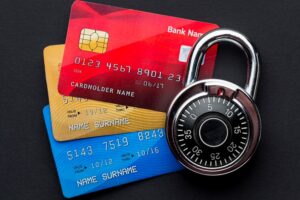Credit cards vs Buy Now, Pay Later in the US: Which payment method truly saves you money!
Managing your spending in the US has become more complicated with the rise of Buy Now, Pay Later (BNPL) services competing against traditional credit cards. While both offer flexibility, choosing the wrong one can cost you more than you expect.
Understanding the benefits and risks of credit cards versus BNPL is crucial if you want to control your budget, build credit, and avoid hidden fees. Let’s break down these popular payment methods and see which one truly works for you.
Credit cards vs BNPL: key differences to consider

Credit cards have been a trusted financial tool in the US for decades, giving users access to revolving credit lines with the potential to earn rewards, cash back, and travel perks.
In contrast, BNPL services allow consumers to split purchases into installments, often interest-free if paid on time, making them appealing for short-term financing without upfront costs.
The most noticeable difference between these options is how they affect your overall financial health. Credit cards directly impact your credit score through utilization and payment history.
BNPL, on the other hand, may not always report to credit bureaus unless you miss payments, which can hurt your profile unexpectedly and create lasting damage.
While BNPL providers like Affirm, Afterpay, and Klarna promote simple payments, the ease of approval often leads to overspending. With just a few clicks, it’s possible to accumulate multiple BNPL agreements simultaneously, leaving users with more obligations than anticipated.
Credit cards require an application process that reviews your creditworthiness, which can serve as a natural barrier against taking on more debt than you can handle responsibly.
How interest and fees shape your payments
One of the main reasons many people choose BNPL over credit cards is the promise of zero interest. If you make all your payments on time, BNPL plans often cost nothing extra. However, late fees and penalties can add up quickly, turning a convenient solution into a financial setback that offsets any initial savings.
Credit cards, by contrast, come with interest rates that can climb over 20% if you carry a balance. But with careful use, such as paying your full statement each month, you can avoid interest entirely and still enjoy benefits like fraud protection, extended warranties, and purchase insurance, which add extra value to every transaction.
For larger expenses, BNPL can seem attractive with its fixed payment plans. Yet, credit cards sometimes offer promotional 0% APR periods, which allow you to spread costs over time without interest.
Comparing the length and terms of these offers is essential to determine which option saves you more money in the long run and helps you maintain financial stability.
The impact on your credit score and future borrowing
Your credit score shapes your ability to borrow and secure favorable rates for major expenses like car loans and mortgages. Regular credit card use helps build your credit through consistent on-time payments, responsible utilization, and account longevity.
These elements contribute to a stronger credit profile over time, which can save you thousands in interest on future loans. In contrast, BNPL doesn’t always contribute to your credit history. Some providers do not report positive activity to credit bureaus, meaning your responsible payments may go unnoticed.
However, missed BNPL payments can appear on your credit report and cause lasting damage that affects your ability to secure new credit products. Long-term credit building favors traditional credit cards because they provide a consistent opportunity to show lenders your reliability.
BNPL is still evolving in its relationship with credit reporting, making it a less reliable method for improving your financial profile and boosting your score. If you are looking for lasting financial growth, credit cards offer the stronger foundation.
Which option fits your financial goals
If your priority is building long-term credit, credit cards are the clear winner. Their ability to support your credit score while offering extra perks like cashback or travel rewards creates ongoing value. However, they require discipline to avoid high-interest debt and careful management to prevent overspending.
BNPL shines when you need to spread out payments for specific purchases without taking on a long-term obligation. It works well for people who want a simple, short-term solution but don’t rely on it regularly.
For larger purchases that you know you can pay off within a few weeks or months, BNPL can serve as a helpful tool. It’s important to match the payment method to the purchase.
Credit cards work better for everyday expenses, recurring bills, and unexpected costs where flexibility matters. BNPL is best suited for planned, manageable purchases where you can commit to the payment schedule without risk.
Hidden risks you should not overlook
Both credit cards and BNPL services come with hidden costs that many consumers fail to notice until it’s too late. With credit cards, the risk lies in interest compounding rapidly if you don’t pay your balance.
Missing a single payment can lead to late fees and a drop in your credit score, which can affect future borrowing opportunities and cost you more down the line. BNPL’s risk is more subtle.
Its simplicity can make it too easy to take on multiple installment plans at once. Without clear visibility into all your payment obligations, it’s easy to overextend your budget and accidentally miss due dates.
Missed payments can lead to fees, debt collection, and negative credit reporting, which can haunt you long after the purchase is complete. Another overlooked factor is the dispute process.
Credit cards provide strong protections if a purchase goes wrong, allowing you to challenge fraudulent charges or defective products. BNPL services may not offer the same level of security, leaving you to negotiate directly with merchants, which can be time-consuming and frustrating if issues arise.
Balancing convenience and responsibility
In the end, credit cards and BNPL each serve a purpose, but neither should be used carelessly. The key to success with either method is understanding the terms, monitoring your spending, and ensuring you can meet your payment obligations on time.
Credit cards offer greater long-term advantages through credit building, rewards, and consumer protections. They work best if you can manage your balance and use the perks to your advantage without falling into debt.
Meanwhile, BNPL is ideal for disciplined users who prefer straightforward, short-term plans with predictable costs and no lasting financial commitment. When choosing between them, think about your financial habits, goals, and the nature of your purchases.
There is no one-size-fits-all answer, but by evaluating the true cost and impact of each method, you can make smarter decisions that protect your finances and secure your future.
Graduated and master's student in History. Fanatic of books and series. Editor since 2023.




